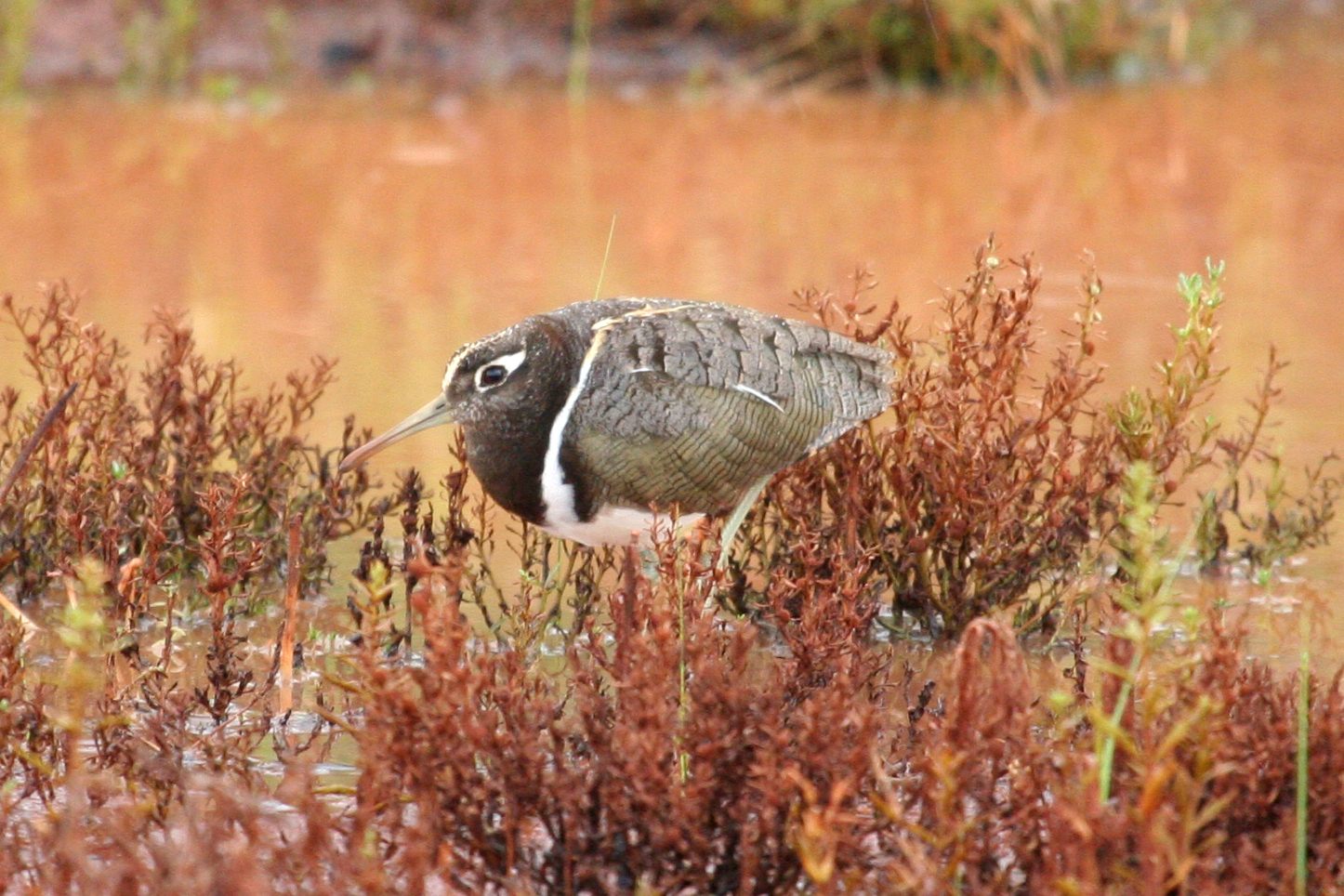Elected representatives in government are in charge of the policy and funding that can make or break saving threatened species. Their decisions and actions matter.
Lingiari has or used to have 70 threatened animals within its boundaries. One of them is me, the Australian Painted Snipe.
We took care to attach appropriate images that are as close to representative of each species as our resources and the availability of images allowed. However, we could not ensure perfect accuracy in every case. Some images show species that share the same genus but not at the species or subspecies level.
Australian Painted Snipe
Rostratula australis
Status: Endangered
The Environment Protection and Biodiversity Conservation Act 1999 (EPBC Act) lists threatened species under six categories:
Extinct, Extinct in the wild, Critically Endangered, Endangered, Vulnerable, Conservation dependent. Read more about these categories
Rostratula australis is found across 145 electorates.
The Australian Painted Snipe is a stocky wading bird around 220–250 mm in length with a long pinkish bill. The adult female, more colourful than the male, has a chestnut-coloured head, with white around the eye and a white crown stripe, and metallic green back and wings, barred with black and chestnut. There is a pale stripe extending from the shoulder into a V down its upper back. The adult male is similar to the female, but is smaller and duller with buff spots on the wings and without any chestnut colouring on the head, nape or throat. This species is generally seen singly or in pairs, or less often in small flocks. Flocking occurs during the breeding season, when adults sometimes form loose gatherings around a group of nests. Flocks can also form after the breeding season, and at some locations small groups regularly occur. Groups comprising of a male and up to six offspring have been observed.¹
Explore more about this species on the Atlas of Living Australia




Explore more about the threats facing species on our Resources page.
- a shrub (Acacia equisetifolia)
- Latz's Wattle (Acacia latzii)
- Waddy (Acacia peuce)
- Birds Nest Wattle (Acacia pickardii)
- a shrub (Acacia praetermissa)
- Undoolya Wattle (Acacia undoolyana)
- Desert Flannel-flower (Actinotus schwarzii)
- Christmas Island Spleenwort (Asplenium listeri)
- Atalaya brevialata (Atalaya brevialata)
- a shrub (Boronia quadrilata)
- a shrub (Boronia viridiflora)
- Burmannia sp. Bathurst Island (Burmannia sp. Bathurst Island )
- Clausena excavata (Clausena excavata)
- Dwarf Desert Spike-rush (Eleocharis papillosa)
- a sedge (Eleocharis retroflexa)
- Rainbow Valley Fuchsia Bush (Eremophila prostrata)
- Frankenia plicata (Frankenia plicata)
- Goodenia quadrifida (Goodenia quadrifida)
- Helicteres macrothrix (Helicteres macrothrix)
- a shrub (Hibiscus brennanii)
- Hibiscus cravenii (Hibiscus cravenii)
- a vine (Hoya australis subsp. oramicola)
- Central Australian Cabbage Palm (Livistona mariae subsp. mariae)
- MacDonnell Ranges Cycad (Macrozamia macdonnellii)
- Minnie Daisy (Minuria tridens)
- a vine (Mitrella tiwiensis)
- Olearia macdonnellensis (Olearia macdonnellensis)
- a fern (Pneumatopteris truncata)
- Prostanthera schultzii (Prostanthera schultzii)
- Glory of the Centre (Ricinocarpos gloria-medii)
- a triggerplant (Stylidium ensatum)
- Tectaria devexa (Tectaria devexa)
- Mountain Thryptomene (Thryptomene wittweri)
- a tree (Toechima sp. East Alligator )
- a herb (Typhonium jonesii)
- a herb (Typhonium mirabile)
- a herb (Typhonium taylori)
- a shrub (Xylopia monosperma)
You are in federal electorate Lingiari.
